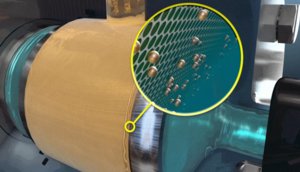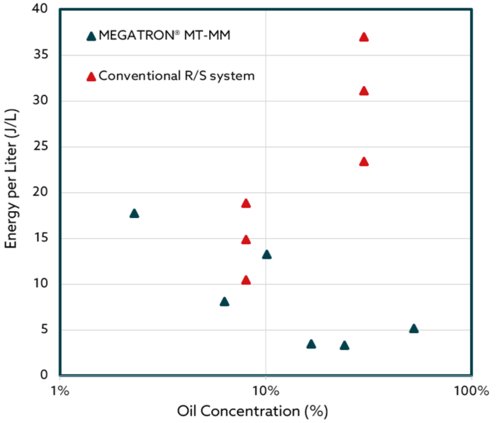Gentle Processing
Application purpose
To compare MEGATRON® MT-MM with conventional dispersing units in terms of energy requirements and its impact in the definition of a "gentle" process.
Challenge
- Drastic design differences between technologies can make the analysis complex
How did we achieve it?
Emulsions are found in a broad range of industries including food, cosmetics and pharmaceuticals to mention a few and, therefore, its study and understanding is quite relevant in the scientific field. Among the emulsions, there are particular cases in which the effect of temperature and shear are critical for the emulsion production and stability. W/O/W emulsions are a good example of that. Those are double emulsions that have water droplets in an oil droplet, which is dispersed in a watery phase. It has been reported to be sensitive not only to temperature, but also to shear rates1. This would be critical when considering one common application of W/O/W emulsions: the encapsulation of drugs.
Fortunately, Kinematica is not only well-known for its state-of-the-art rotor-stator systems, but also for its passion for equipment innovation. That's why the MEGATRON® MT-MM is the best ally for this kind of application in which it's necessary to avoid high shear rates and keep temperatures low.

The Kinematica Solution
How can MEGATRON® MT-MM ensure gentle processing? The attribute "gentle" applies to this equipment since droplets are already formed at the surface of a dynamically enhanced membrane and detached by the acting shear stresses to their final size. In that matter, only one break up event act on the droplets, whereas, in rotor-.stator systems, the droplet needs to be broken down to the final size by a series of break up events2. See the principle illustrated below.




Considering this gentle detachment, the energy per litre needed to produce an emulsion is drastically reduced when emulsifying with the membrane device. This results in less temperature increase and less shear stress needed to produce the smallest emulsion droplets. Additionally, the energy requirment is independent of the oil concentration.
Do you want to have more information? Contact us here or send an email to science@kinematica.ch.
1 Muguet, V. Seiller, M., BarrattG. Ozer., Marty, J.P., & Grossiord, J.L. (2001). Formulation of shear rate sensitive multiple emulsions. Journal of Controlled Release, 70(1-2), 37-49. https://doi.org/10.1016/S0168-3659(00)00314-X
2 Müller-Fischer, N. (2007). Dynamically enhanced membrane foaming [ETH Zurich]. https://doi.org/10.3929/ETHZ-A-005331832
